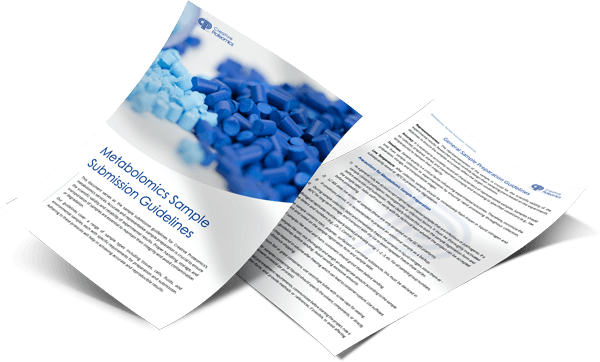Gibberellin Analysis Service
Creative Proteomics offers comprehensive gibberellin analysis services, including absolute quantification, profiling, hormonal interaction studies, and stress response analysis. Using advanced LC-MS/MS technology, we provide accurate and reliable data on gibberellin distribution, function, and its role in plant growth and development. Our services help researchers better understand plant hormonal mechanisms and support advancements in agriculture and biotechnology.
Submit Your Request Now
×- Define
- What We Provide
- Technology Platform
- Advantages
- Sample Requirements
- Applications
- Demo
- FAQs
- Case
- Publications
What is Gibberellin?
Gibberellin is an important phytohormone widely found in plants, fungi and bacteria. It plays a key role in plant growth and development, including promoting stem elongation, breaking seed dormancy, inducing flower induction, and stimulating cell division and lengthening.
Gibberellins are diterpenoids derived from isoprene pyrophosphate (IPP), and their synthesis involves several steps, including the formation and conversion of carvoneol. Gibberellins are widely distributed in plants and are particularly abundant in young tissues such as stems and seeds.
In agricultural applications, gibberellins have been used to promote the production of seedless grapes by treating ripe grapes to increase fruit size and improve fruit quality. In addition, gibberellins have been used to artificially induce tasseling and flowering in plants, thereby accelerating seed production.
Research on gibberellins has not only been limited to their physiological functions, but also to their signaling mechanisms. Gibberellins regulate gene expression and plant growth by binding to the intracellular GID1 receptor, which in turn affects the degradation of the DELLA protein.
Gibberellins have multiple functions in plant growth and development, and their analysis and application are of great importance in agriculture and biotechnology. Creative Proteomics provides a platform for the analysis of Gibberellins to help you more accurately measure and understand the mechanism of action of Gibberellins, and thus promote research progress in related fields.
Gibberellin Analysis Offered by Creative Proteomics
Absolute Quantification of Gibberellins: Using the latest LC-MS/MS (Liquid Chromatography-Mass Spectrometry/Mass Spectrometry) platform, we deliver precise and reliable quantitative analysis of up to 16 different gibberellin types.
Gibberellin Profiling: We identify and measure the concentration of various gibberellins in different plant tissues, helping researchers understand their distribution and function in plants.
Hormonal Interaction Studies: We investigate how gibberellins interact with other phytohormones like auxins, cytokinins, and abscisic acid in regulating plant growth processes.
Stress Response Analysis: Our service also includes the assessment of gibberellin's role in plant stress responses, such as drought, salinity, and pathogen resistance.
Technology Platforms for Gibberellin Analysis
High-Performance Liquid Chromatography (HPLC)
This system is used for the chromatographic separation of gibberellins before detection by mass spectrometry. It offers high precision, reliability, and reproducibility for routine and high-throughput applications.
Features:
- Equipped with a variety of detectors, including UV/VIS and fluorescence.
- Suitable for both qualitative and quantitative analysis.
- Robust and versatile for multiple sample types and analysis.
Liquid Chromatography-Mass Spectrometry (LC-MS/MS)
This high-performance liquid chromatography system is coupled with a triple quadrupole mass spectrometer to enable precise separation and identification of gibberellins at ultra-low concentrations. The system provides high-resolution analysis, ensuring that even trace levels of gibberellins are accurately detected.
Features:
- High sensitivity and selectivity for complex biological samples.
- Enhanced resolution for complex mixtures.
- Ability to detect multiple gibberellins simultaneously using multiple reaction monitoring (MRM).
Isotope Labeling and Internal Standards
To ensure accurate quantification, we utilize isotopic internal standards, which help correct for matrix effects and enhance the precision of our results.

Agilent 1290 Infinity II LC System (Figure from Agilent)

Agilent 1290 Infinity II LC System coupled with Agilent 6470 Triple Quadrupole (Figure from Agilent)
Advantages of Gibberellin Assay
- High Quantitative Accuracy
We utilize multiple internal standards to ensure precise monitoring of the entire extraction and detection process. This guarantees accurate and reproducible results. The relative standard deviation (RSD) for 85% of compounds is under 15%, with 100% showing RSDs below 25%, ensuring reliable data across different samples.
- Exceptional Sensitivity
Our derivatization process significantly enhances the sensitivity of gibberellin detection, enabling us to identify and quantify trace amounts. The detection limit for gibberellins is as low as 0.90 pg/mL, and the quantification limit reaches 3.00 pg/mL, allowing us to detect even the smallest concentrations in plant extracts.
- Strict Quality Control
We conduct thorough quality control, testing 20 key compounds involved in the gibberellin biosynthesis pathway. This ensures comprehensive analysis and guarantees the reliability of results for every sample.
Sample Requirements for Gibberellin Analysis
| Sample Type | Minimum Sample Quantity | Notes |
|---|---|---|
| Plant Leaf Tissue | 50 mg | Fresh or freeze-dried tissue, homogenized |
| Plant Root Tissue | 100 mg | Fresh or freeze-dried tissue, homogenized |
| Plant Stem Tissue | 100 mg | Fresh or freeze-dried tissue, homogenized |
| Seed Samples | 200 mg | Whole seeds, ground to a fine powder |
| Soil Samples | 1 g | Dry soil, homogenized |
| Fruit/Flower Tissue | 100 mg | Fresh or freeze-dried tissue, homogenized |
Applications of Gibberellin Assay Service
- Seed Germination Studies
Gibberellin assays help measure its role in breaking seed dormancy and promoting uniform germination, enabling better seedling establishment in agriculture. - Plant Growth Regulation
Analyze gibberellin's effect on stem elongation, leaf and petiole growth, and overall plant development, important for improving crop yields and plant morphology. - Flowering and Fruit Development
Gibberellin assays are used to assess its role in flower induction, fruit set, and the development of seedless fruits, enhancing crop production and quality. - Stress Response Research
Evaluate gibberellin's involvement in plant stress responses to environmental factors such as drought, salinity, and pathogen resistance, helping develop stress-tolerant crops. - Hormonal Interactions
Investigate how gibberellins interact with other phytohormones like auxins and abscisic acid, providing insights into plant growth regulation and signaling mechanisms. - Biotechnology and Genetic Studies
Study the impact of gibberellin biosynthesis and signaling pathways on genetically modified plants, advancing genetic research and crop improvement. - Agricultural Crop Optimization
Used in crop management to optimize growth patterns, increase yield, and improve resistance to environmental stress, directly benefiting agricultural productivity.
Demo

LC-MS chromatogram showing the separation of 10 phytohormones and 8 internal standards within the standard mixture of developed method. (Cao, Da, et al., Frontiers in Plant Science, 2017).
FAQ of Gibberellin Analysis
Can gibberellins be used in agricultural practices?
Yes, gibberellins are widely used in agriculture to promote seed germination, enhance stem elongation, improve fruit set, and increase overall crop yield. They can also help mitigate genetic dwarfism in certain plant species36.
What are the detection limits for gibberellin analysis?
The Gibberellin Analysis Service can achieve detection limits as low as 1.05 pg/mL, making it suitable for analyzing samples with ultra-trace levels of these hormones.
How do the gibberellin profiles differ between various plant species or varieties?
Gibberellin profiles can vary significantly depending on the species or even the variety of plants. Our analysis service allows for comparative profiling, where we measure and analyze the gibberellin content in different plant varieties under various growth conditions. This enables you to see how gibberellin levels differ and can help identify varieties with higher or more stable gibberellin concentrations, which can be critical for improving crop performance or quality.
Is your gibberellin analysis suitable for both model plants and crop species?
Absolutely. Our gibberellin analysis service is versatile and can be applied to both model plants (such as Arabidopsis thaliana or Arabidopsis variants) and a wide range of crop species, including rice, wheat, soybean, and fruit plants. Whether you are conducting basic plant biology research or working with agricultural crops, our service is tailored to meet the needs of diverse plant species and experimental goals.
Learn about other Q&A.
Gibberellin Analysis Case Study
Publications
Here are some publications in Metabolomics research from our clients:

- Anti-inflammatory activity of black soldier fly oil associated with modulation of tlr signaling: A metabolomic approach. 2023. https://doi.org/10.3390/ijms241310634
- Disruption of CYCLOPHILIN 38 function reveals a photosynthesis-dependent systemic signal controlling lateral root emergence. 2020. https://doi.org/10.1101/2020.03.11.985820
- Resting natural killer cell homeostasis relies on tryptophan/NAD+ metabolism and HIF‐1α. 2023. https://doi.org/10.15252/embr.202256156
- The activity of the aryl hydrocarbon receptor in T cells tunes the gut microenvironment to sustain autoimmunity and neuroinflammation. 2023. https://doi.org/10.1371/journal.pbio.3002000
- Overexpression of maize ZmLOX6 in Arabidopsis thaliana enhances damage-induced pentyl leaf volatile emissions that affect plant growth and interaction with aphids. 2023. https://doi.org/10.1093/jxb/erac522









